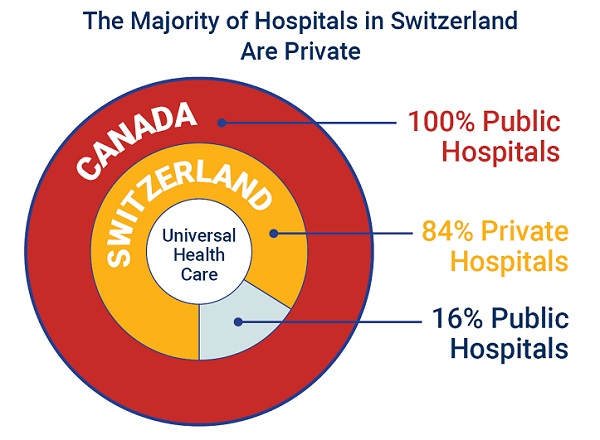Business
2025 Energy Outlook: Steering Through Recovery and Policy Shifts

From EnergyNow.ca
By Leonard Herchen & Yuchen Wang of GLJ
Their long-term real price forecast projects WTI at USD $74.00 per barrel and Henry Hub natural gas at USD $4.00 per MMBtu in 2025 dollars, signaling expectations of market stabilization and sustained global demand.
The energy markets in 2025 are undergoing transformative structural changes, highlighted by the operational launch of key infrastructure projects such as LNG Canada. This development significantly enhances Canada’s ability to meet rising global LNG demand while alleviating long-standing supply bottlenecks. At the same time, economic recovery across major markets remains uneven, shaping varied trends in energy demand and production activity.
Geopolitical dynamics are poised to redefine the competitive landscape, with the return of a Trump-led U.S. administration introducing potential shifts in trade policies, regulatory frameworks, and relationships with leading energy-producing nations. These changes, coupled with climate policy advancements and an accelerated global transition toward renewable energy, present additional complexities for the oil and gas sector.
Amid these uncertainties, GLJ’s analysts express confidence in the resilience of market fundamentals. Their long-term real price forecast projects WTI at USD $74.00 per barrel and Henry Hub natural gas at USD $4.00 per MMBtu in 2025 dollars, signaling expectations of market stabilization and sustained global demand.
Oil Prices
The oil market in 2025 reflects a delicate balance between supply and demand. During Q4 2024, WTI prices remained stable, fluctuating between $69 and $73 per barrel. This stability highlights the market’s resilience, even in the face of a slower global economic recovery and geopolitical challenges, including weaker demand in regions like China and increased production in North America.
Geopolitical risks remain pivotal, with ongoing tensions in the Middle East and sanctions on oil-exporting nations such as Iran and Venezuela threatening supply disruptions. While OPEC+ production cuts continue to provide vital support to prices by tightening global supply, these efforts are partially offset by the rising output of non-OPEC producers, notably in the U.S. and Canada.
The Trans Mountain Expansion (TMX) project is reshaping the pricing dynamics of WCS crude relative to WTI. By increasing export capacity to the West Coast, TMX has created conditions for a sustained narrowing of the WCS-WTI differential, moving away from seasonal fluctuations.
The return of a Trump-led U.S. administration introduces additional challenges. Deregulation policies aimed at boosting domestic oil production may exert downward pressure on prices, while potential trade tariffs and revised international agreements could further complicate global oil flows.
In this dynamic environment, GLJ forecasts WTI to average $71.25 per barrel and Brent $75.25 per barrel in 2025. These projections reflect robust long-term fundamentals, including sustained global demand and ongoing efforts to manage supply dynamics, emphasizing the market’s resilience despite near-term uncertainties.
Natural Gas Prices
In 2025, GLJ’s forecast suggests Henry Hub prices will average $3.20 per MMBtu, supported by steady domestic demand, seasonal winter peaks, and robust LNG exports. U.S. natural gas continues to play a critical role globally, ensuring supply security for key markets in Europe and Asia. The combination of growing industrial use, power generation demand, and stable production levels provides a solid foundation for price stability.
For the Canadian market, GLJ projects AECO natural gas prices to average $2.05 per MMBtu in 2025, representing a recovery from the lows of 2024. This improvement is attributed to easing regional oversupply and stabilizing demand. However, challenges persist, as production continues to outpace infrastructure expansion, prompting a downward adjustment of GLJ’s long-term AECO price forecast by $0.40 per MMBtu. The ramp-up of LNG Canada’s operations is expected to progressively enhance market dynamics and address these challenges.
On a global scale, LNG benchmarks such as NBP, TTF, and JKM have remained relatively stable, supported by high storage levels in Europe and balanced supply-demand conditions. European suppliers have effectively managed storage drawdowns, ensuring sufficient reserves for winter. Nevertheless, these benchmarks remain susceptible to market volatility driven by geopolitical uncertainties.
The CAD/USD Exchange Rate
The Canadian dollar experienced sharp depreciation during the last quarter of 2024, with the CAD/USD exchange rate falling below 0.70 USD. Economists have attributed this decline to the strength of the U.S. economy and its currency, the widening gap between the Bank of Canada and the U.S. Federal Reserve’s lending rates, as well as tariff threats and a political crisis in Ottawa. These factors have created a favorable environment for the U.S. dollar, putting downward pressure on the Canadian dollar.
Looking ahead to 2025, GLJ forecasts a CAD/USD exchange rate averaging 0.705 USD, underpinned by steady oil and gas revenues and enhanced export capacity from major projects such as LNG Canada and the TMX and eventual resolution of internal political issues and return to normalcy in US tariff policy.
Nevertheless, the outlook for the Canadian dollar remains uncertain, shaped by global economic recovery—particularly in China—and U.S. policy decisions under the Trump administration. While near-term challenges persist, Canada’s resource-driven economy and strategic energy export position provide a degree of resilience. In the absence of significant economic or geopolitical disruptions, GLJ projects the CAD/USD exchange rate to stabilize around 0.75 USD over the long term.
In 2025, GLJ expanded its database to include forecasts for Colombia Vasconia and Castilla Crude, as well as lithium prices, reflecting the increasing focus on diverse energy and resource markets. The addition of lithium forecasts aligns with the growing global emphasis on energy transition minerals critical for electric vehicles and battery storage solutions. A separate blog, set to be published next week on the GLJ website, will explore the lithium price forecast in greater depth, offering a detailed analysis and strategic implications for the energy sector.
GLJ’s forecast values for key benchmarks is as follows:

Alberta
Alberta announces citizens will have to pay for their COVID shots

From LifeSite News
The government said that it has decided to stop ‘waste’ by not making the shots free starting this fall.
Beginning this fall, COVID shots in the province will have to be pre-ordered at the full price, about $110, to receive them. (This will roll out in four ‘phases’. In the first phases COVID shots will still be free for those with pre-existing medical conditions, people on social programs, and seniors.)
The UCP government in a press release late last week noted due to new “federal COVID-19 vaccine procurement” rules, which place provinces and territories as being responsible for purchasing the jabs for residents, it has decided to stop “waste” by not making the jab free anymore.
“Now that Alberta’s government is responsible for procuring vaccines, it’s important to better determine how many vaccines are needed to support efforts to minimize waste and control costs,” the government stated.
“This new approach will ensure Alberta’s government is able to better determine its overall COVID-19 vaccine needs in the coming years, preventing significant waste.”
The New Democratic Party (NDP) took issue with the move to stop giving out the COVID shots for free, claiming it was “cruel” and would place a “financial burden” on people wanting the shots.
NDP health critic Sarah Hoffman claimed the move by the UCP is health “privatization” and the government should promote the abortion-tainted shots instead.
The UCP said that in 2023-2024, about 54 percent of the COVID shots were wasted, with Health Minister Adriana LaGrange saying, “In previous years, we’ve seen significant vaccine wastage.”
“By shifting to a targeted approach and introducing pre-ordering, we aim to better align supply with demand – ensuring we remain fiscally responsible while continuing to protect those at highest risk,” she said.
The UCP government said that the COVID shots for the fall will be rolled out in four phases, with those deemed “high risk” getting it for free until then. However, residents who want the shots this fall “will be required to pay the full cost of the vaccine, the government says.”
The jabs will only be available through public health clinics, with pharmacies no longer giving them out.
The UCP also noted that is change in policy comes as a result of the Federal Drug Administration in the United States recommending the jabs be stopped for young children and pregnant women.
The opposite happened in Canada, with the nation’s National Advisory Committee on Immunization (NACI) continuing to say that pregnant women should still regularly get COVID shots as part of their regular vaccine schedule.
The change in COVID jab policy is no surprise given Smith’s opposition to mandatory shots.
As reported by LifeSiteNews, early this year, Smith’s UCP government said it would consider halting COVID vaccines for healthy children.
Smith’s reasoning was in response to the Alberta COVID-19 Pandemic Data Review Task Force’s “COVID Pandemic Response” 269-page final report. The report was commissioned by Smith last year, giving the task force a sweeping mandate to investigate her predecessor’s COVID-era mandates and policies.
The task force’s final report recommended halting “the use of COVID-19 vaccines without full disclosure of their potential risks” as well as outright ending their use “for healthy children and teenagers as other jurisdictions have done,” mentioning countries like “Denmark, Sweden, Norway, Finland, and the U.K.”
The mRNA shots have also been linked to a multitude of negative and often severe side effects in children and all have connections to cell lines derived from aborted babies.
Many Canadian doctors who spoke out against COVID mandates and the experimental mRNA injections were censured by their medical boards.
LifeSiteNews has published an extensive amount of research on the dangers of the experimental COVID mRNA jabs that include heart damage and blood clots.
Business
Carney’s European pivot could quietly reshape Canada’s sovereignty

This article supplied by Troy Media.
Canadians must consider how closer EU ties could erode national control and economic sovereignty
As Prime Minister Mark Carney attempts to deepen Canada’s relationship with the European Union and other supranational institutions, Canadians should be asking a hard question: how much of our national independence are we prepared to give away? If you want a glimpse of what happens when a country loses control over its currency, trade and democratic accountability, you need only look to Bulgaria.
On June 8, 2025, thousands of Bulgarians took to the streets in front of the country’s National Bank. Their message was clear: they want to keep the lev and stop the forced adoption of the euro, scheduled for Jan. 1, 2026.
Bulgaria, a southeastern European country and EU member since 2007, is preparing to join the eurozone—a bloc of 20 countries that share the euro as a common currency. The move would bind Bulgaria to the economic decisions of the European Central Bank, replacing its national currency with one managed from Brussels and Frankfurt.
The protest movement is a vivid example of the tensions that arise when national identity collides with centralized policy-making. It was organized by Vazrazdane, a nationalist, eurosceptic political party that has gained support by opposing what it sees as the erosion of Bulgarian sovereignty through European integration. Similar demonstrations took place in cities across the country.
At the heart of the unrest is a call for democratic accountability. Vazrazdane leader Konstantin Kostadinov appealed directly to EU leaders, arguing that Bulgarians should not be forced into the eurozone without a public vote. He noted that in Italy, referendums on the euro were allowed with support from less than one per cent of citizens, while in Bulgaria, more than 10 per cent calling for a referendum have been ignored.
Protesters warned that abandoning the lev without a public vote would amount to a betrayal of democracy. “If there is no lev, there is no Bulgaria,” some chanted. For them, the lev is not just a currency: it is a symbol of national independence.
Their fears are not unfounded. Across the eurozone, several countries have experienced higher prices and reduced purchasing power after adopting the euro. The loss of domestic control over monetary policy has led to economic decisions being dictated from afar. Inflation, declining living standards and external dependency are real concerns.
Canada is not Bulgaria. But it is not immune to the same dynamics. Through trade agreements, regulatory convergence and global commitments, Canada has already surrendered meaningful control over its economy and borders. Canadians rarely debate these trade-offs publicly, and almost never vote on them directly.
Carney, a former central banker with deep ties to global finance, has made clear his intention to align more closely with the European Union on economic and security matters. While partnership is not inherently wrong, it must come with strong democratic oversight. Canadians should not allow fundamental shifts in sovereignty to be handed off quietly to international bodies or technocratic elites.
What’s happening in Bulgaria is not just about the euro—it’s about a people demanding the right to chart their own course. Canadians should take note. Sovereignty is not lost in one dramatic act. It erodes incrementally: through treaties we don’t read, agreements we don’t question, and decisions made without our consent.
If democracy and national control still matter to Canadians, they would do well to pay attention.
Isidoros Karderinis was born in Athens, Greece. He is a journalist, foreign press correspondent, economist, novelist and poet. He is accredited by the Greek Ministry of Foreign Affairs as a foreign press correspondent and has built a distinguished career in journalism and literature.
Troy Media empowers Canadian community news outlets by providing independent, insightful analysis and commentary. Our mission is to support local media in helping Canadians stay informed and engaged by delivering reliable content that strengthens community connections and deepens understanding across the country.
-

 Business22 hours ago
Business22 hours agoCarney’s European pivot could quietly reshape Canada’s sovereignty
-

 Alberta22 hours ago
Alberta22 hours agoAlberta’s grand bargain with Canada includes a new pipeline to Prince Rupert
-

 Crime1 day ago
Crime1 day agoManhunt on for suspect in shooting deaths of Minnesota House speaker, husband
-

 Bruce Dowbiggin7 hours ago
Bruce Dowbiggin7 hours agoWOKE NBA Stars Seems Natural For CDN Advertisers. Why Won’t They Bite?
-

 Crime7 hours ago
Crime7 hours agoMinnesota shooter arrested after 48-hour manhunt
-

 Energy7 hours ago
Energy7 hours agoCould the G7 Summit in Alberta be a historic moment for Canadian energy?
-

 Aristotle Foundation4 hours ago
Aristotle Foundation4 hours agoThe Canadian Medical Association’s inexplicable stance on pediatric gender medicine
-

 conflict8 hours ago
conflict8 hours ago“Evacuate”: Netanyahu Warns Tehran as Israel Expands Strikes on Iran’s Military Command




